Search results for 'Mediums for pigment colours'
-
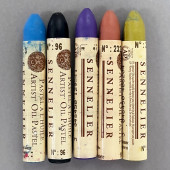
Sennelier Oil Pastels Standard
Starting at: £2.85
Beautifully soft and creamy oil pastels in a range of 120 colours. Blend of pure pigment, oil and acid free wax. 10% discount for 10+ pastels. 20% discount for 20+ pastels. Learn More -
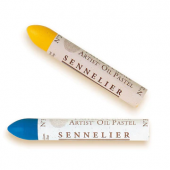
Sennelier Oil Pastels Large
Starting at: £11.50
Beautifully soft and creamy oil pastels in a range of 120 colours. Blend of pure pigment, oil and acid free wax. 20% Discount for purchasing 4+ pastels. Learn More -
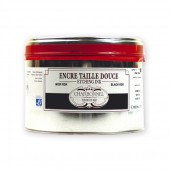
-
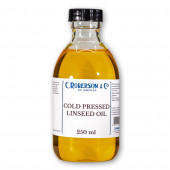
Roberson Cold Pressed Linseed Oil
Starting at: £7.50
Linseed Oil is derived from flax seeds, and appears on our shelves in many guises: Cold Pressed, Refined, Stand Oil, and as a key ingredient in many mediums. It has been appreciated for its drying properties since the Medieval period, and has become the most popular oil used in painting today due to the strong, flexible and glossy film that it creates. Cold Pressed Linseed Oil is ideal for the grinding of pigment to make oil paints. The process of producing Cold Pressed Linseed Oil results in a lower yield, but the resultant oil is of a superior quality to oil that has been extracted by other methods, creating a paint film that is more resistant to embrittlement on aging. Its yellow colour is caused by the high concentration of linolenic acid, the presence of which provides durability to the paint film. The amount of oil that each pigment requires can vary enormously. Alizarin Crimson, for example, requires a high percentage of oil compared to most other colours. We would always recommend mulling the pigment and oil together thoroughly to create a "short" or buttery paste, with evenly dispersed, well-coated pigment particles. This process contributes to the strength and flexibility of the paint film, and prevents the inclusion of excess oil. Origin: USA Learn More -
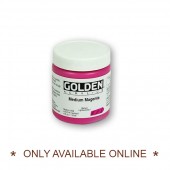
Golden Heavy Body Acrylic 119ml
Starting at: £16.20
The first acrylic colors offered by Golden Acrylic, Heavy Body paints are known for their exceptionally smooth, buttery consistency. The Heavy Body palette includes the largest assortment of unique pure pigments in a 100% acrylic emulsion available to professional artists. These colours offer excellent permanency and light-fastness. There are no fillers, extenders, opacifiers, toners, or dyes added. *Please note, this range is stored offsite. Please allow extra time for your order to be processed and dispatched. Learn More -
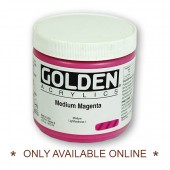
Golden Heavy Body Acrylic 473ml
Starting at: £47.30
The first acrylic colors offered by Golden Acrylic, Heavy Body paints are known for their exceptionally smooth, buttery consistency. The Heavy Body palette includes the largest assortment of unique pure pigments in a 100% acrylic emulsion available to professional artists. These colours offer excellent permanency and lightfastness. There are no fillers, extenders, opacifiers, toners, or dyes added. *Please note, this range is stored offsite. Please allow extra time for your order to be processed and dispatched. Learn More -
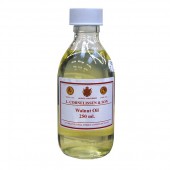
Cornelissen Walnut Oil
Starting at: £8.20
The introduction of Walnut Oil as a pigment binder is contemporaneous with the emergence of Linseed Oil. Their drying properties have been appreciated since the Middle Ages, and throughout history there is evidence of both oils being used alongside each other within the same painting. In fact, until the sixteenth century, it is believed that Walnut Oil was the preferred binding medium among Italian artists. It is made from mature walnut kernals, offering a pale colour and brilliant gloss. For this reason, it is sometimes chosen as a binder for light colours, as it provides a stronger paint film than Poppy Oil, and faster drying times. However, a paint film made from Walnut Oil will tend to be brittle, so it is more suited to a rigid support rather than canvas.
Learn More -
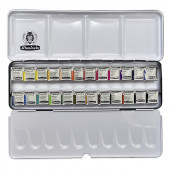
Schmincke Akademie Aquarell Set
Regular Price: £84.00
Special Price £50.00
Schmincke Akademie Aquarell, 24 half pan fine watercolours in a metal sketching case. Learn More -
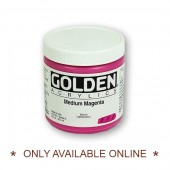
Golden Heavy Body Acrylic 236ml
Starting at: £29.40
The first acrylic colors offered by Golden Acrylic, Heavy Body paints are known for their exceptionally smooth, buttery consistency. The Heavy Body palette includes the largest assortment of unique pure pigments in a 100% acrylic emulsion available to professional artists. These colours offer excellent permanency and lightfastness. There are no fillers, extenders, opacifiers, toners, or dyes added. *Please note, this range is stored offsite. Please allow extra time for your order to be processed and dispatched. Learn More -
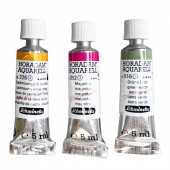
Schmincke Artists Watercolour 5 ml Tube
Starting at: £6.35
Finest quality watercolours made in Germany. This range offers 139 colours, including 95 single-pigment colours, 3 perylene pigments, 5 quinacridone pigments, and a selection of granulating colours. They present endless mixing possibilities, and can combined with Schmincke's selection of watercolour mediums as well as with their gouache paints. The solid colours are produced by pouring the liquid paint into the pans four times, ensuring the maximum yield for each colour. Also available in half and whole pans and 15ml tubes. Learn More -
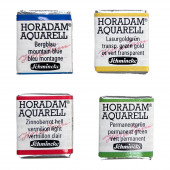
Schmincke Artists Watercolour Half Pan
Starting at: £6.05
Finest quality watercolours made in Germany. This range offers 139 colours, including 95 single-pigment colours, 3 perylene pigments, 5 quinacridone pigments, and a selection of granulating colours. They present endless mixing possibilities, and can combined with Schmincke's selection of watercolour mediums as well as with their gouache paints. The solid colours are produced by pouring the liquid paint into the pans four times, ensuring the maximum yield for each colour. Also available in whole pans and tubes of 5 and 15ml. Learn More -
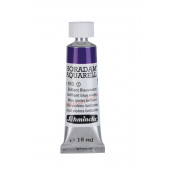
Schmincke Horadam Aquarell, Artists' Watercolour, 15 ml Tube
Starting at: £12.65
Finest quality watercolours made in Germany. This range offers 139 colours, including 95 single-pigment colours, 3 perylene pigments, 5 quinacridone pigments, and a selection of granulating colours. They present endless mixing possibilities, and can combined with Schmincke's selection of watercolour mediums as well as with their gouache paints. The solid colours are produced by pouring the liquid paint into the pans four times, ensuring the maximum yield for each colour. Also available in half and whole pans and 5ml tubes. Learn More -
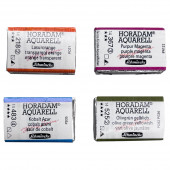
Schmincke Artists Watercolour Whole Pan
Starting at: £7.95
Finest quality watercolours made in Germany. This range offers 139 colours, including 95 single-pigment colours, 3 perylene pigments, 5 quinacridone pigments, and a selection of granulating colours. They present endless mixing possibilities, and can combined with Schmincke's selection of watercolour mediums as well as with their gouache paints. The solid colours are produced by pouring the liquid paint into the pans four times, ensuring the maximum yield for each colour. Also available in half pans and tubes of 5 and 15ml. Learn More -
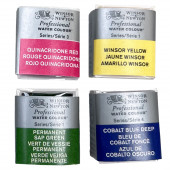
W&N Professional Watercolour Half Pan
Starting at: £7.90
Water colour, more than any other medium, reflects the unique characteristics of the pigments used. Winsor & Newton Professional Water Colours use only the finest pigments and are known for their brilliance, permanence and strength of colour. Learn More
-
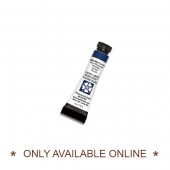
Daniel Smith Artists Watercolour 5ml Tube
Starting at: £7.20
The 5ml range consists of 88 colours and includes some of the fabulous Primatek colours that are handmade with authentic mineral pigments and Quinacridones with their pure, intense colour combining the power of staining pigments with the luminosity of the transparents. They also have the more traditional favourites. *Please note, this range is stored offsite. Please allow extra time for your order to be processed and dispatched. Learn More -
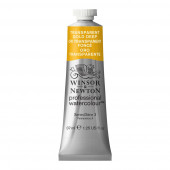
W&N Professional Watercolour 37ml Tube
Starting at: £19.20
Water colour, more than any other medium, reflects the unique characteristics of the pigments used and our Professional Water Colours use only the finest pigments, and are known for their brilliance, permanence and strength of colour. Learn More
-
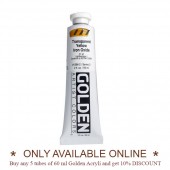
Golden Heavy Body Acrylic 59ml
Starting at: £11.70
The first acrylic colors offered by Golden Acrylic, Heavy Body paints are known for their exceptionally smooth, buttery consistency. The Heavy Body palette includes the largest assortment of unique pure pigments in a 100% acrylic emulsion available to professional artists. These colours offer excellent permanency and lightfastness. There are no fillers, extenders, opacifiers, toners, or dyes added. MULTI-BUY DISCOUNT Buy any five tubes of 59ml Golden Acrylic Heavy and get 10% discount. *Please note, this range is stored offsite. Please allow extra time for your order to be processed and dispatched. Learn More -
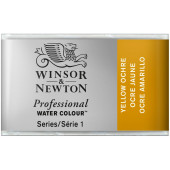
W&N Professional Watercolour Whole Pan
Starting at: £9.55
Water colour, more than any other medium, reflects the unique characteristics of the pigments used and our Professional Water Colours use only the finest pigments, and are known for their brilliance, permanence and strength of colour. Learn More
-
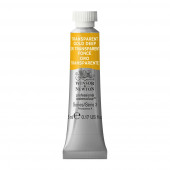
W&N Professional Watercolour 5ml Tube
Starting at: £8.25
Water colour, more than any other medium, reflects the unique characteristics of the pigments used and our Professional Water Colours use only the finest pigments, and are known for their brilliance, permanence and strength of colour. Learn More
-
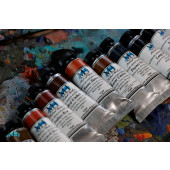
Michael Harding Watercolour 15 ml Tube
Starting at: £13.60
Michael Harding's new range of Professional Watercolours are formulated with the highest pigment concentration possible. A comprehensive range of 136 colours, including historical colours such as Lapis Lazuli and Rose Madder. These watercolours have impressive colour strength, vibrance, clarity, and longevity. Learn More -
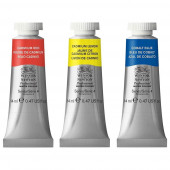
W&N Professional Watercolour 14ml Tube
Starting at: £16.00
Water colour, more than any other medium, reflects the unique characteristics of the pigments used and our Professional Water Colours use only the finest pigments, and are known for their brilliance, permanence and strength of colour. Learn More
-
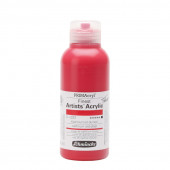
Schmincke PRIMAcryl 250ml
Starting at: £25.30
ONLY AVAILABLE ONLINE[]. Schmincke PRIMAcryl is a high viscosity premium acrylic range. Artists quality high pigment content gives all the shades a new dimension of brilliance and expressiveness. The titanium white is unparalleled. It's high pigmentation, opacity and cover rate enables incredibly brilliant mixtures. No colour shift between the wet and dry states. High lightfastness level either 4 or 5 stars indicates the quality of these premium acrylic paints. All colours do not yellow and the dried paint layers are durable, flexible and water resistant. *Please note, this range is stored offsite. Please allow extra time for your order to be processed and dispatched. Learn More -
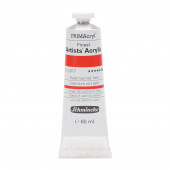
Schmincke PRIMAcryl 60ml
Starting at: £7.60
[ONLY AVAILABLE ONLINE] Schmincke PRIMAcryl is a high viscosity premium acrylic range of 84 premium shades. Artists quality high pigment content gives all the shades a new dimension of brilliance and expressiveness. The titanium white is unparalleled. It's high pigmentation, opacity and cover rate enables incredibly brilliant mixtures. No colour shift between the wet and dry states. High lightfastness level either 4 or 5 stars indicates the quality of these premium acrylic paints. All colours do not yellow and the dried paint layers are durable, flexible and water resistant. *Please note, this range is stored offsite. Please allow extra time for your order to be processed and dispatched. Learn More -
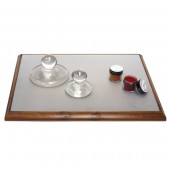
Mixing Slab
Starting at: £24.00
A glass slab with wooden cradle for the grinding of pigments.
The friction created between the sand-blasted surfaces of the glass slab and muller facilitates the thorough mixing of pigment and medium, creating a consistent and strong paint body. This slab can be used to manufacture many types of paint including watercolours, egg tempera and oils.
Mulling is of particular importance when making oil paint; simply mixing pigment and oil together using a palette knife will result in an unstable substance with poor plasticity, which contains a large amount of excess oil and unevenly distributed pigment particles. Thorough mulling in a figure-of-eight motion will enable the pigment to be fully combined into the binder, strengthening the resultant paint film.
PLEASE NOTE: The separate glass slabs are in stock but it is a call to order item due to the fact that we cannot guarantee its safe delivery, however well we package it. Please ring us to discuss your delivery options. In combination with the glass frame, delivery is more secure but we still cannot guarantee a delivery without breakage.
Learn More -
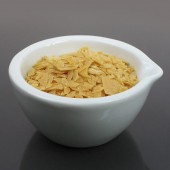
Carnauba Wax Yellow
Starting at: £6.50
Carnauba Wax is the hardest wax commonly used in the production of artists' materials, with a melting point of 83-86°c. It is derived from a tree native to South America, and is available in a natural colour (grey), or a refined colour (pale yellow). Small amounts of carnauba wax are commonly used in both oil painting mediums and encaustic painting, usually in conjunction with beeswax to add toughness, durability and sheen to the paint film. It creates an inflexible surface, so works best on rigid supports such as gesso panels, and it should be noted that it will raise the melting point of encaustic mixtures. It can produce a glossy finish; as such it is used in waxes and polishes for shoes, cars, musical instruments, furniture, and wooden floors, especially when mixed with beeswax and turpentine. Learn More -
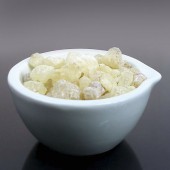
Gum Damar
Starting at: £10.00
Damar is a pale, almost colourless tree resin, which is soluble in turpentine, but not in alcohol or mineral spirits. It can be used as a varnish or as a glossy painting medium in conjunction with vegetable oils, and is generally preferable to other resin-based varnishes, such as mastic varnish, as it retains its colourless appearance for a longer period of time. In encaustic painting, the inclusion of damar resin imparts toughness and gloss to the paint surface. Learn More -
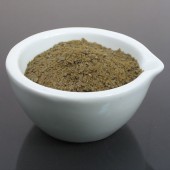
Carnauba Wax Grey
Starting at: £8.40
Carnauba Wax is the hardest wax commonly used in the production of artists' materials, with a melting point of 83-86°c. It is derived from a tree native to South America, and is available in a natural colour (grey), or a refined colour (pale yellow). Small amounts of carnauba wax are commonly used in both oil painting mediums and encaustic painting, usually in conjunction with beeswax to add toughness, durability and sheen to the paint film. It creates an inflexible surface, so works best on rigid supports such as gesso panels, and it should be noted that it will raise the melting point of encaustic mixtures. It can produce a glossy finish; as such it is used in waxes and polishes for shoes, cars, musical instruments, furniture, and wooden floors, especially when mixed with beeswax and turpentine. Learn More -
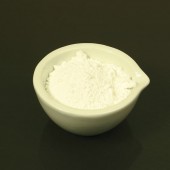
Alumina Hydrate Light
Starting at: £8.30
Alumina Hydrate is an inert pigment with highly absorbent properties, which can be ground into oil paint as an almost colourless extender. It is often used as an additive in commercial oil paints, particularly in conjunction with transparent or lake pigments, as it provides stability and a homogenous consistency without effecting colour or gloss, although it may effect the pigment strength. When combined with linseed oil, it produces an almost transparent painting medium for extending oil colours. Sometimes referred to as Lake Base. Learn More -
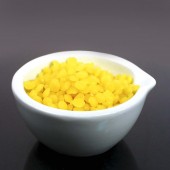
Natural Beeswax
Starting at: £11.20
Beeswax is derived from melted honeycomb, and is available in two grades. Bleached Beeswax Pellets are white, having been bleached by the sun, and are an appropriate choice for using with pale colours, although they may revert to yellow over time. Natural Beeswax Pellets are yellow in colour, and offer a more flexible structure with a higher resin content. Beeswax has a melting point of 63-66°c, and may turn brown if over-heated. It is the most widely used wax in artists' materials, having a wide range of applications. Please see below for more details.
Learn More -
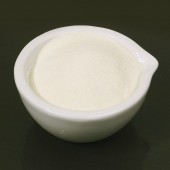
Casein Lactic
Starting at: £15.95
Casein is a protein derived from dried milk, which has been used in painting since ancient times. It can be combined with Ammonium Carbonate to form an emulsion, which acts as a durable, non-resoluble binder for pigments, producing a matte, fast-drying paint, similar in appearance to egg tempera. We use casein as a binder for our L. Cornelissen & Son Pigment Colour Charts, as it is a medium that clearly showcases the characteristics and behaviour of each pigment in its pure form. Casein paints can be applied in thin layers to watercolour paper, but would require a more rigid support, such as a gesso panel, to be applied thickly, as the comparative inflexibility of the paint layer means that it can be prone to cracking. Subsequent layers of paint should be more diluted to aid adhesion, and impasto effects are not recommended. It is possible to varnish casein paintings using an acrylic or damar varnish to obtain a glossy surface if desired, although this is not a necessary step. Casein can also be used as an ingredient in gesso, and is a suitable binder for fresco secco techniques.
Some pigments may require a wetting agent in order to fully disperse within the binder, in which case alcohol may be used.
Learn More




